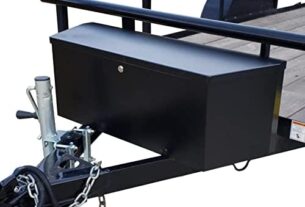Are you an avid hunter or wildlife enthusiast? If so, then you know how important it is to have the right trapping tools in your arsenal. Trapping tools are essential for catching and restraining animals, and they come in a variety of shapes and sizes.
In this comprehensive guide, we will cover everything you need to know about trapping tools. From types of traps to factors to consider when choosing one, we’ve got you covered. So, let’s dive in!
Types of Traps
There are several types of traps available on the market. Each type is designed to catch specific types of animals and has its own unique features. Here are some of the most popular types of traps:
1. Conibear Trap – This trap is designed to kill the animal quickly and humanely. It has two metal bars that close around the animal’s neck when triggered.
2. Live Cage Trap – This trap allows you to capture the animal alive and relocate it elsewhere. It is ideal for catching raccoons, opossums, and other small animals.
3. Snares – These are wire loops that tighten around the animal’s neck or leg when triggered. They are commonly used for catching coyotes, foxes, and other wild canines.
4. Leg Hold Traps – This type of trap restrains the animal by holding onto its leg. It is commonly used for catching beavers, otters, and muskrats.
Factors to Consider When Choosing a Trap
When choosing a trap, there are several factors you should consider. These include:
1. Target Species – The type of trap you choose will depend on the species you are targeting. Make sure you choose a trap that is appropriate for the animal you want to catch.
2. Location – The location where you plan to set the trap is also important. Make sure you choose a trap that is appropriate for the terrain and environment.
3. Legal Restrictions – Some states have laws regulating the use of certain types of traps. Make sure you check your local laws before purchasing a trap.
4. Safety – Always prioritize safety when using trapping tools. Make sure you follow proper procedures and use the right protective gear.
5. Cost – Trapping tools can range in price from a few dollars to hundreds of dollars. Consider your budget when choosing a trap.
Tips for Successful Trapping
Now that you know about the different types of traps and factors to consider, here are some tips for successful trapping:
1. Use Bait – Bait is an effective way to attract animals to your trap. Choose bait that is specific to the species you are targeting.
2. Set Multiple Traps – Setting multiple traps can increase your chances of catching an animal.
3. Check Your Traps Regularly – Checking your traps regularly will ensure that any caught animals do not suffer unnecessarily.
4. Be Patient – Trapping requires patience and persistence. Don’t give up if you don’t catch anything right away.
Conclusion
Trapping tools are essential for anyone who wants to catch or restrain animals. Whether you’re a hunter or wildlife enthusiast, choosing the right trap is crucial for success. By considering factors such as target species, location, legal restrictions, safety, and cost, you can make an informed decision when selecting a trap.
Remember to always prioritize safety and follow proper procedures when using trapping tools. With these tips and tricks, you’ll be well on your way to successful trapping!
Wiki Reference: https://en.wikipedia.org/wiki/Animal_trapping




